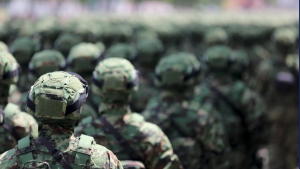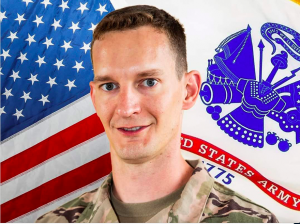Collecting military challenge coins is something that service members understand. However, those outside the military may have never seen them before or comprehend their unique history. Many purposes are served by challenge coins in the military. One is to reward exceptional performance during training or combat operations. Rewarding excellence is commonly utilized among military leaders to incentivize excellence and raise the morale of a unit. At other times coins are awarded to all service members involved in a particular unit or mission. This shows that each Solider awarded the coin belongs to that unit or contributed to the mission. When I see a military challenge coin, I try to identify the unit, operation, or other insignia to determine if I recognize those features.
I was unaware of the traditions of military challenge coins until I arrived at West Point. As a cadet at the United States Military Academy, I often interacted with Army officers and senior non-commissioned officers who had on their desk or in their office a large collection of military challenge coins. I would sometimes recognize the unit insignia of a well known Army unit or a combat operation or training center that was displayed on a specific coin.
I distinctly remember the first time I was personally awarded a military challenge coin. As a cadet, I volunteered to be on the Color Guard during my sophomore year. As part of my Color Guard duties that year, I often carried general officer flags during parades. One day, as I was performing that duty for the Commandant of Cadets, Brigadier General Robert L. Caslen, the General surprised me by shaking my hand and thanking me for doing an excellent job in performing my duties. He presented me with a coin bearing one star and the West Point insignia that to this day is the military challenge coin of the highest rank that I have been awarded.
 What Is a Military Letter of Reprimand?
What Is a Military Letter of Reprimand? Cole Law Group Blog
Cole Law Group Blog
















 One topic in military law important to many veterans is Veterans Affairs (VA) disability. Federal law established the US Department of Veterans Affairs with several important missions to serve our veterans.
One topic in military law important to many veterans is Veterans Affairs (VA) disability. Federal law established the US Department of Veterans Affairs with several important missions to serve our veterans.

 VA disability law can be daunting for many eligible veterans who want to submit a VA disability claim or wish to appeal a negative disability determination. One of the main concepts that is difficult for service members to understand is which injuries or illnesses VA disability will cover. The answer is “only those disabilities that the applicant can prove are service connected.”
VA disability law can be daunting for many eligible veterans who want to submit a VA disability claim or wish to appeal a negative disability determination. One of the main concepts that is difficult for service members to understand is which injuries or illnesses VA disability will cover. The answer is “only those disabilities that the applicant can prove are service connected.”
 Many service members understand the frustration of being wrongfully denied disability compensation from the Veterans Administration. In my experience I have observed veterans who became frustrated with the process and ultimately gave up. This is most unfortunate. If you have suffered an injury or illness due to your military service, you should be compensated under federal law. However, the failure of many service members to understand the VA system can cause self-inflicted problems.
Many service members understand the frustration of being wrongfully denied disability compensation from the Veterans Administration. In my experience I have observed veterans who became frustrated with the process and ultimately gave up. This is most unfortunate. If you have suffered an injury or illness due to your military service, you should be compensated under federal law. However, the failure of many service members to understand the VA system can cause self-inflicted problems.